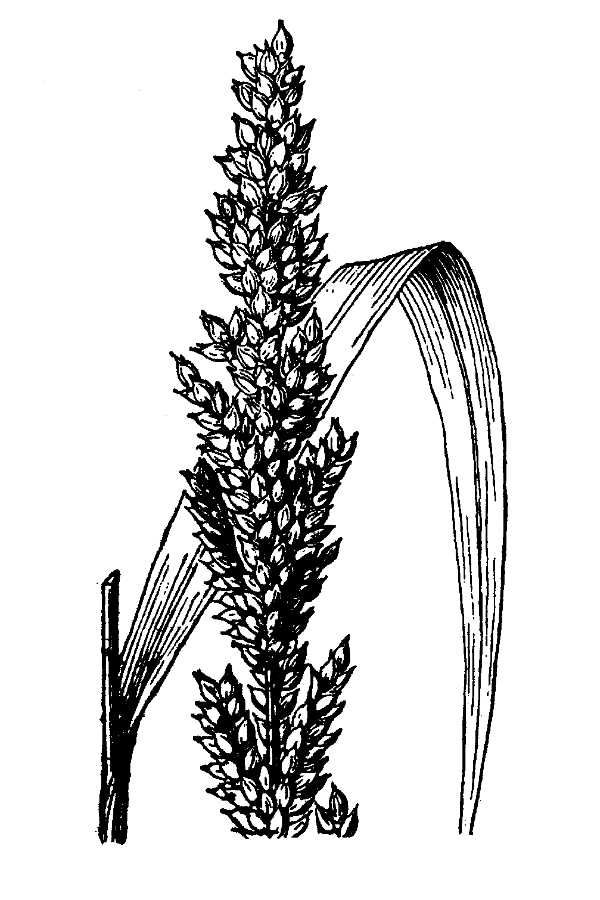Echinochloa
|
Family: Poaceae |
Plants annual or perennial; with or without rhizomes. Culms 10-460 cm, prostrate, decumbent or erect, distal portions sometimes floating, sometimes rooting at the lower nodes; nodes usually glabrous; internodes hollow or solid. Sheaths open, compressed; auricles absent; ligules usually absent but, if present, of hairs; blades linear to linear-lanceolate, usually more than 10 times longer than wide, flat, with a prominent midrib. Inflorescences terminal, panicles of simple or compound spikelike branches attached to elongate rachises, axes not terminating in a bristle, spikelets subsessile, densely packed on the angular branches; disarticulation below the glumes (cultivated taxa not or tardily disarticulating). Spikelets plano-convex, with 2(3) florets; lower florets sterile or staminate; upper florets bisexual, dorsally compressed. Glumes membranous; lower glumes usually 1/4-2/5 as long as the spikelets (varying to more than 1/2 as long), unawned to minutely awn-tipped; upper glumes unawned or shortly awned; lower lemmas similar to the upper glumes in length and texture, unawned or awned, awns to 60 mm; lower paleas vestigial to well-developed; upper lemmas coriaceous, dorsally rounded, mostly smooth, apices short or elongate, firm or membranous, unawned; upper paleas free from the lemmas at the apices; lodicules absent or minute; anthers 3. Caryopses ellipsoid, broadly ovoid or spheroid; embryos usually 0.7-0.9 times as long as the caryopses. x = 9. Name from the Greek echinos, hedgehog, and chloa, grass, in reference to the bristly or often awned spikelets. Spikelets planoconvex, with one perfect terminal fl and one neuter (ours) or sometimes staminate floret below, sessile or nearly so, crowded in 4-several rows in thick racemes or spikes, these aggregated into a terminal panicle; first glume 3-veined, awnless or minutely awn-tipped, usually less than half as long as the second; second glume and sterile lemma prominently 5-veined, surpassing the fertile lemma, one or both often awned from the tip; sterile lemma with a well developed palea; fertile lemma with a firm, cartilaginous, rounded, smooth, shiny body narrowed to a ±differentiated tip, its palea of similar texture, with the margins (but not the tip) clasped by the lemma; ours annuals with compressed sheaths, no ligule, and soft, elongate lvs, these incised at the base. 40, mostly in warm reg. Gleason, Henry A. & Cronquist, Arthur J. 1991. Manual of vascular plants of northeastern United States and adjacent Canada. lxxv + 910 pp. ©The New York Botanical Garden. All rights reserved. Used by permission. |

